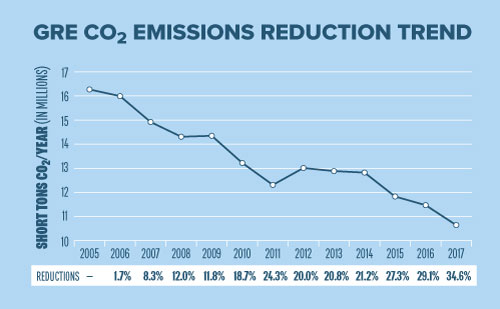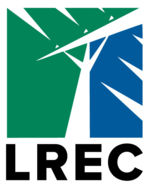For several years, Lake Region Electric Cooperative has continued with efforts to bring energy efficiency benefits to our consumer-members. We’ve also moved forward with strategic plans to utilize more renewable sources of energy and reduce greenhouse gas emissions into the environment. This all adds up to a term now used across the electric utility industry — environmentally beneficial electrification.
Environmentally beneficial electrification is rooted in “greening the grid” and the strategic planning that will lead to a cleaner energy future. While the industry works to reduce carbon emissions there are simultaneous efforts to provide new opportunities to use electricity in ways that also benefit the environment. For instance, wind and solar power are contributing more to our nation’s energy supply. At the same time, electric appliances are more energy efficient, especially when coupled with load management and smart grid technologies.
Environmentally beneficial electrification changes the way we think about environmental impacts, particularly in choosing to use electricity compared to the on-site consumption of fossil fuels (for example: propane, heating oil, and gasoline). Advancing technologies are available now and are decreasing in price. So, as our industry transitions from electricity produced from burning coal to more renewable energy sources, the electricity becomes a cleaner, more climate-friendly choice.
Lake Region, as an electric distribution cooperative, has incorporated this thinking into our long-range strategic planning. We’ve offered a geothermal heating and cooling program to our members. We have also built a local community solar farm and continue to evaluate a local wind and solar hybrid project.
This year, Lake Region purchased its first all-electric vehicle, a Chevrolet Bolt. It’s been met with great approval from the employees who have driven it. Personally, I like the idea of plugging into my local electric cooperative to charge my vehicle!
 Lake Region, along with our generation and transmission provider Great River Energy (GRE), are in a position of anticipating changes, weighing our investments and launching strategies that will achieve three objectives: 1) save our members money, 2) reduce carbon (greenhouse gas) emissions into the environment, and 3) improve the overall efficiency of the electric grid.
Lake Region, along with our generation and transmission provider Great River Energy (GRE), are in a position of anticipating changes, weighing our investments and launching strategies that will achieve three objectives: 1) save our members money, 2) reduce carbon (greenhouse gas) emissions into the environment, and 3) improve the overall efficiency of the electric grid.
GRE achieved Minnesota’s 25 percent renewable energy standard in 2017 – eight years ahead of the requirement. They also recently announced an aggressive corporate goal of having 50% of their electricity be produced from renewable sources by 2030. Wind-produced electricity is now GRE’s lowest cost new generation source. This is evidence of a definite shift in the path our industry is taking. Certainly, a component of rate stability and kWh sales goals enter into the decisions about how our electricity will be produced in the coming decades.
 A history of price volatility in fossil fuel markets is a contributing factor to this shift. Also, the regulatory climate on the state and federal levels is playing an important role. Minnesota’s electric cooperatives are currently working to enhance state laws that will provide more credit for the environmental and efficiency improvements we’ve already accomplished.
A history of price volatility in fossil fuel markets is a contributing factor to this shift. Also, the regulatory climate on the state and federal levels is playing an important role. Minnesota’s electric cooperatives are currently working to enhance state laws that will provide more credit for the environmental and efficiency improvements we’ve already accomplished.
In the long run, through strategies based on beneficial electrification, our co-op members may consume more electricity, but it will be because it is a smart choice to do so. The electricity used will be a cleaner and more efficient choice that reduces the overall energy costs for the consumer. Increasing electric sales, while also reducing carbon emissions, supports the overall costs of our electric distribution system as well as the environment.
 As we move forward, we’ll continue to keep you apprised as Lake Region Electric Cooperative incorporates beneficial electrification into our ongoing business strategy.
As we move forward, we’ll continue to keep you apprised as Lake Region Electric Cooperative incorporates beneficial electrification into our ongoing business strategy.

 Lake Region Electric Cooperative
Lake Region Electric Cooperative